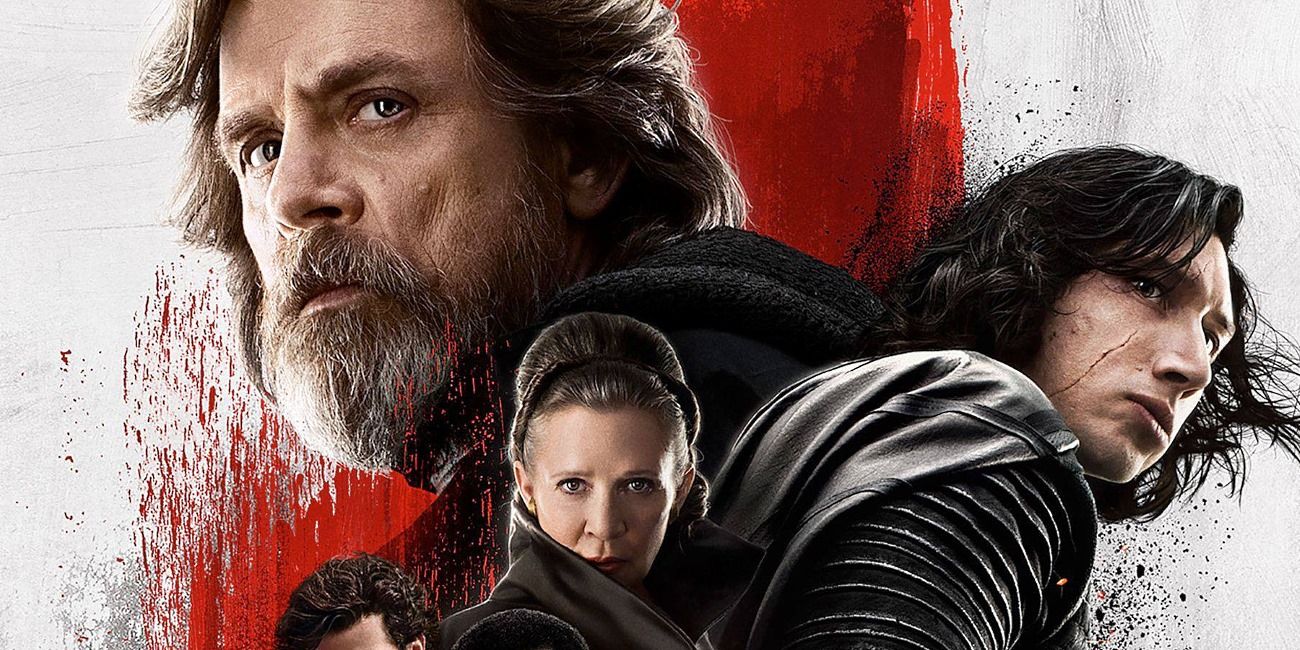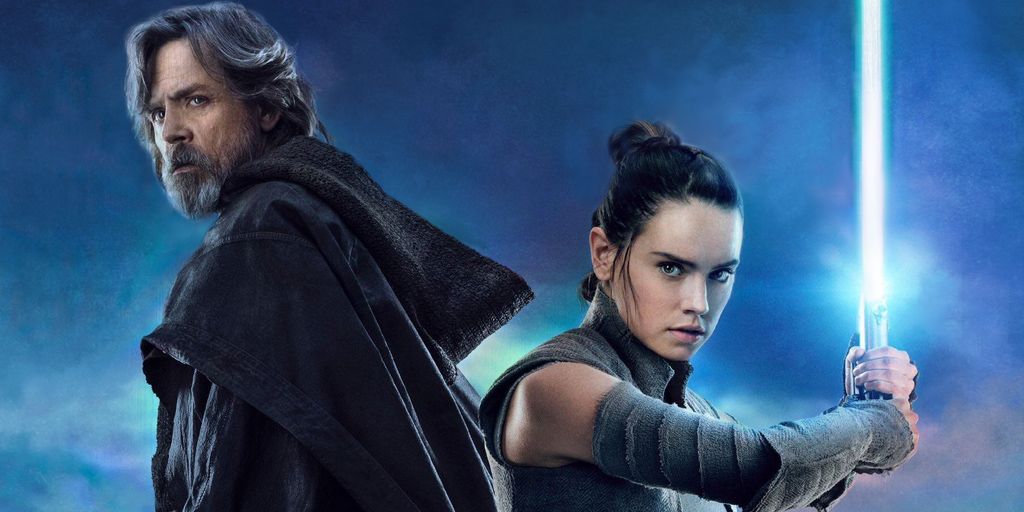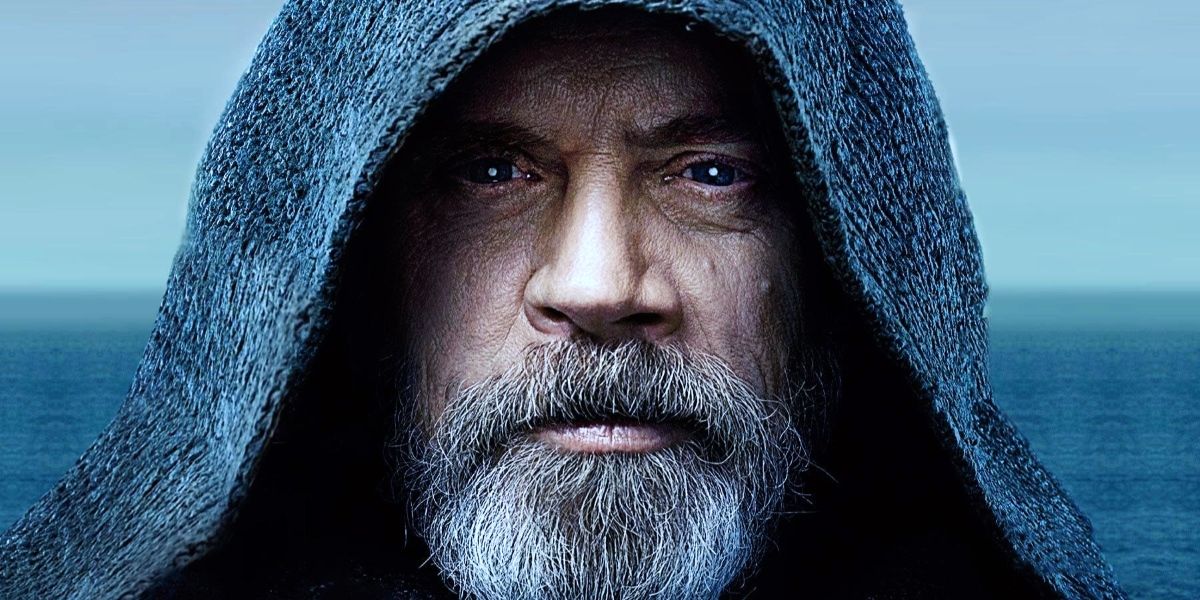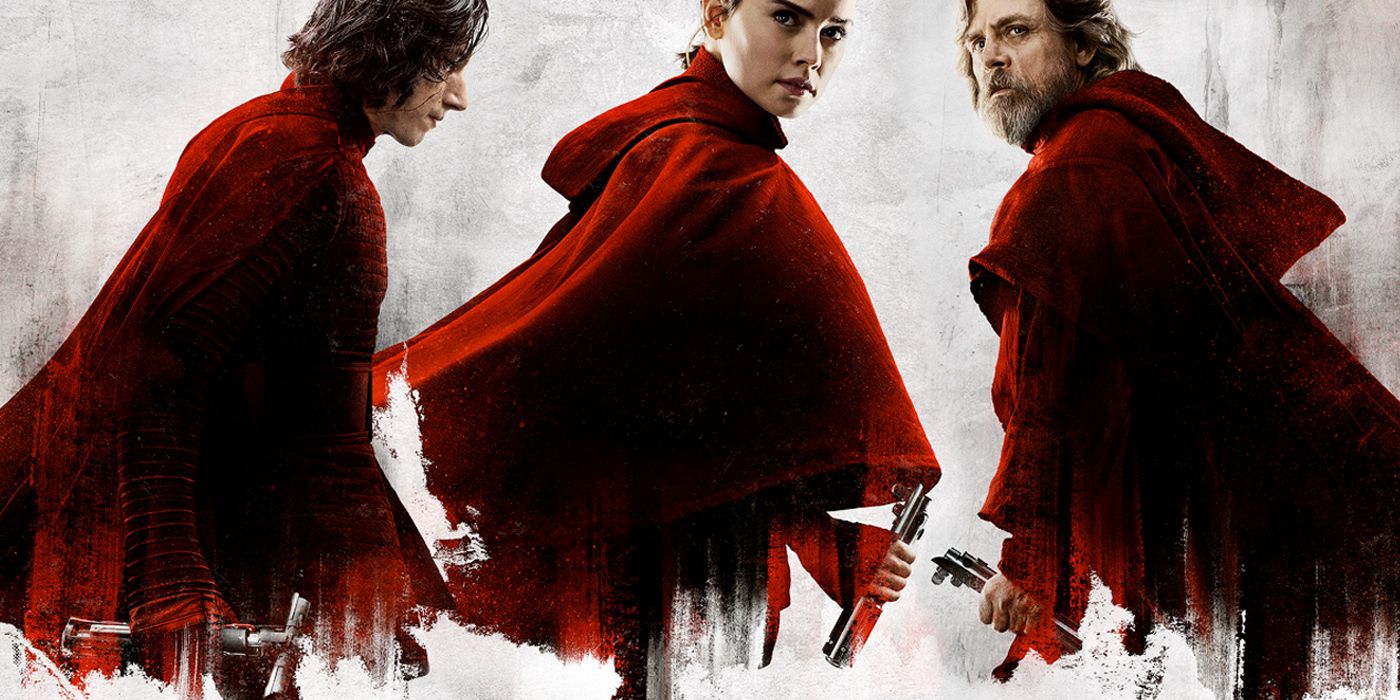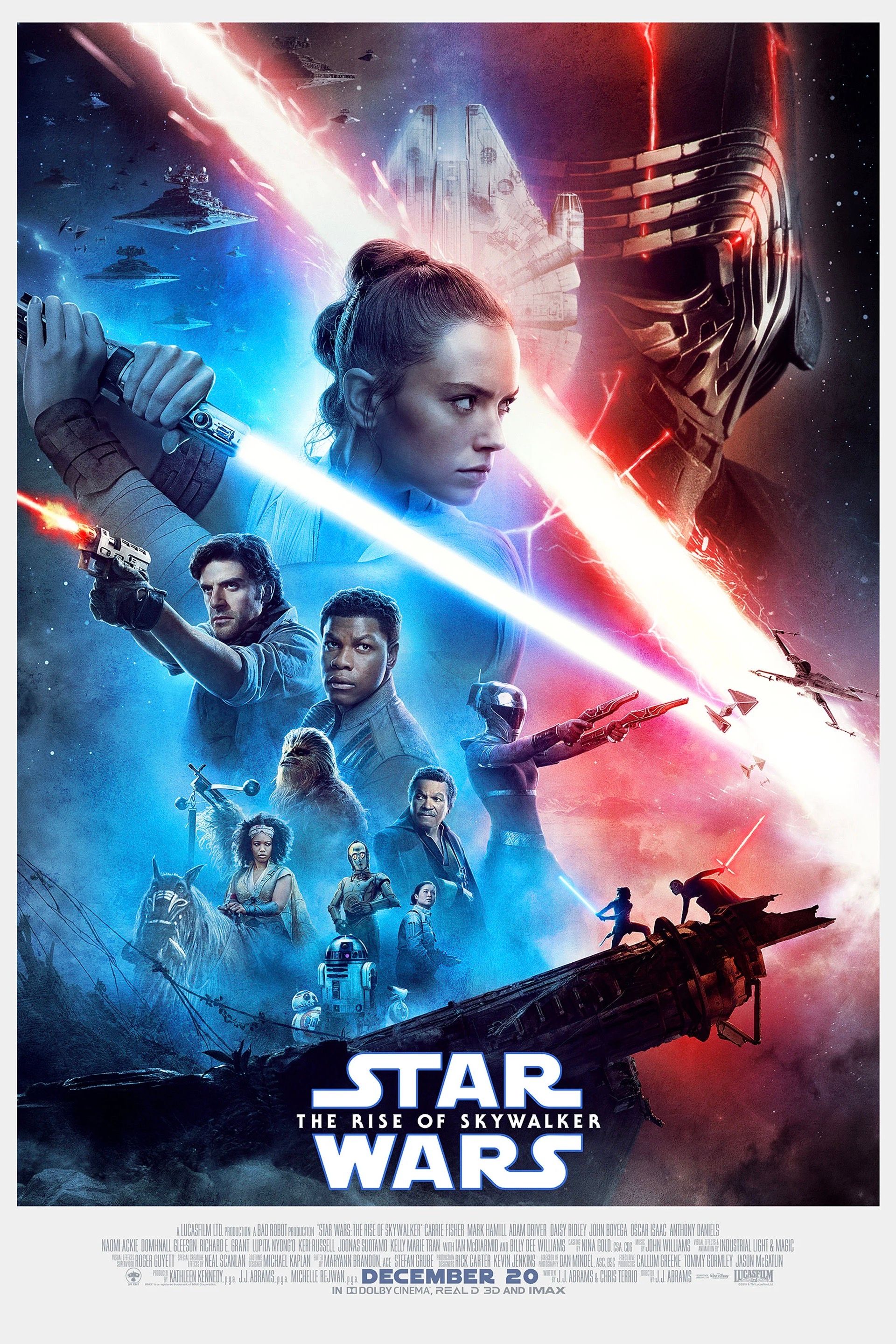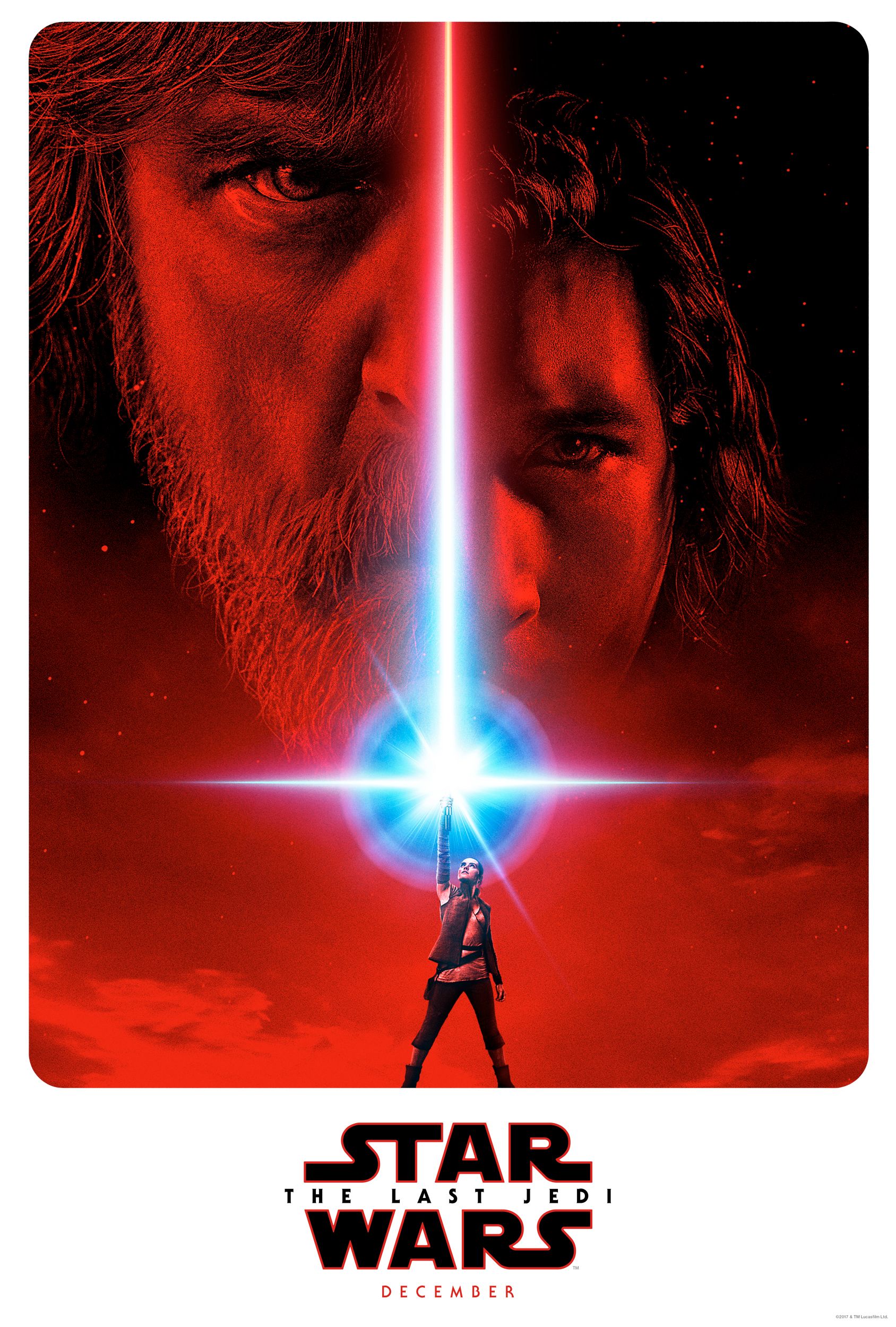Warning: SPOILERS for Star Wars: The Last Jedi ahead
-
For all the controversy it stirred up, Rian Johnson's Star Wars: The Last Jedi ended on the right, albeit tragic, note: Luke Skywalker returns from the brink of nihilism and œwalk[s] out with a laser sword" to take on the First Order. Sadly, his herculean intergalactic projection efforts take a toll, and the Jedi Master joins his esteemed colleagues in the Force. Some fans didn't want Luke to die, and his story arc wasn't quite what Mark Hamill had in mind for the iconic hero, either. Nevertheless, it's a poignant end to one of the most revered champions of Hollywood's blockbuster age and isn't without great significance or purpose.
Luke leaves behind a lasting legacy and inspires the next generation of Star Wars characters and fans a fitting eulogy for the man who brought Darth Vader back to the good side. His sacrifice gives the overall story some wiggle room around the Skywalker dynasty. And, as a childhood icon to many (myself included), Luke's death pushes the war-weary galaxy forward, fanning the flame for countless would-be champions and beginning the heroic cycle anew.
Related: Kylo Ren's Last Jedi Betrayal Proves He is a Sith
Star Wars Parallels
While building his original trilogy, George Lucas started with archetypal story structures from Joseph Campbell's warrior's quest, as taken from The Hero with a Thousand Faces. He then pulled from cinema that influenced him, such as Akira Kurosawa's Seven Samurai and Hidden Fortress and serials like Flash Gordon, among others. And, while mixed-bag in execution, the prequels successfully expanded the fable (some would say too much), exploring the backgrounds of our favorite characters. The Clone Wars and Star Wars Rebels later fleshed out these characters and ideas, elaborating on and smoothing them out as only episodic TV can.
When Disney bought the rights to Star Wars and announced a new trilogy, recreating or even breaking the wheel was an inevitable consequence of moving forward: Luke, Leia, Han, and Chewbacca were, to put it bluntly, past their action-hero prime. Sure, old-school fans (myself included) relished the idea of watching them save the galaxy once again. But each new age demands their own icons. Not everyone has seen the original trilogy, and even those who watch it now aren't necessarily connected to it in the same way as those weaned on it. Ending an aging hero's run is the logical extension of the hero's journey, wherein the pupil becomes the master and passes on what he has learned. Plus, it's basic marketing logic: hook your audience when they're young (it certainly worked for OT fans).
More Where The Hell Is Lando In The Star Wars Sequels?
J.J. Abrams' Episode VII: The Force Awakens took guff for rehashing A New Hope, at times beat for beat. However, its job was reminding older fans why they loved the classic stories while attracting scores of new fans, which it achieved admirably to the tune of over 2 billion dollars at the box office. It succeeded by meshing the saga's classic heroes with their younger counterparts, Rey, Finn, and Poe; Abrams ignited the torch and left numerous dangling threads for Rian Johnson's The Last Jedi to interpret while setting up the eventual baton-pass to Rey and company.
One of the most significant motifs running through Episode VIII is the changing of the guard whether through violent means (Kylo Ren's efforts to œkill it [the past], if you have to) or peaceful ones (Yoda's poignant adage about students 'growing beyond' their teachers). Sure, it would've been amazing if Luke tugged on his Jedi tunic, whipped out his lightsaber, and kicked the First Order across the quadrant which he sort of did (and still might, thanks to Yoda's surprising new skills). But the First Order isn't the Empire, despite their elaborate stylings, and the audience isn't watching the good-vs-evil world Lucas built back in 1977 (before subsequently dismantling it in the prequels); bad guys are, well, complicated and good guys aren't always the best.
Rian Johnson understood Lucas' move to gray-up his world, recognizing Luke's great power as a myth-builder and deconstructor. In order for the Star Wars to rise from the ashes of its past, the Skywalker dynasty had to go down in glorious flames.
Was Luke's Death Necessary?
In as much as death is inevitable, yes. Rian Johnson could have left Luke alive, but his shadow would hang over Star Wars like a shroud. This isn't a bad thing by any means since the Expanded Universe (or Star Wars Legends) spun out countless stories about the aging Skywalker. Trapping an entire franchise within a 40-year-old story arc, though, would doom it. Without focusing on an entirely new elements, which Johnson appears to be working on as well, Luke's gravitational pull would be too strong to escape. He's simply too powerful and important in the grand scheme of things.
Related: The Last Jedi Director Says Kylo Ren Can Be Redeemed
The Skywalker legacy can move forward without him, but the series simply won't be the same without him. Nevertheless, Luke made a pretty good MacGuffin in The Force Awakens. Even though he drove the plot, the latest batch of actors came out of the gates strong and arrived in their own rights during The Last Jedi. Fans may take issue with Lucasfilm's decision to part ways with the Master Jedi, but they know seem to know what they're doing, for better or worse.
The best part is, much like Yoda, Luke's journey has isn't necessarily over. Force ghost powers and future echoplex mentoring aside, evergreen stories from his youth still play out in the pages of Marvel comics. There's also the small matter of 30-plus relatively unexplored years before his self-exile, which included his help founding the New Republic, restarting the Jedi Order, and it's tragic fall. The mid-life of Luke Skywalker could easily wind up as a film or two, if not an entire animated series voiced (hopefully) by none-other than Mr. Hamill.
The End of a Legacy?
One of the most startling elements from TLJ, especially for old-school fans, is the possible end of the Skywalker legacy. We already knew Luke would serve a key purpose, either becoming a teacher, a hero, or both (as it turned out). Still, many fans already suspected the truth: the end of the Jedi sealed Luke's fate. In Last Jedi, Rian Johnson put to bed our (and many of our) childhoods while reminding us that the fire never goes out of the universe. Watching our childhood heroes take their place in the hierarchy of Star Wars was already more than we expected, but it was important to recognize that the future never belongs to the elder set but rather the youth.
Despite all appearances, the Skywalker saga will continue, if nothing else through the dark side machinations of young Ben Solo/Kylo Ren. He's already surpassed his grandfather in ambition realization skills. However, he probably won't leave Episode IX in one piece. Even if he survives the final struggle, he's unlikely to come away without more painful scars, mental, emotional, and physical. Much like his grandfather before him, his path is concave to Luke's, and becoming a legitimate pariah to his uncle's self-imposed status is probably the only way he could survive the final chapter. It would also make for a very interesting side-story.
To be wistfully frank, the Skywalkers are now merely one path of many for Star Wars. A young farm boy's dreams have been realized, dashed, and reborn anew through a young scavenger. Luke may have been part of a generation-spanning Force lineage, but The Last Jedi makes it clear the saga has expanded its parameters beyond bloodlines. Desire, grit, hope, and raw talent now comprise the modern warrior's toolkit. Luke's sacrifice and Kylo's comeuppance may not close the Skywalker story, but their de-emphasis opens up the galaxy far, far away to near-limitless possibilities.
Next: Is Luke Skywalker the Most Powerful Jedi Ever?

